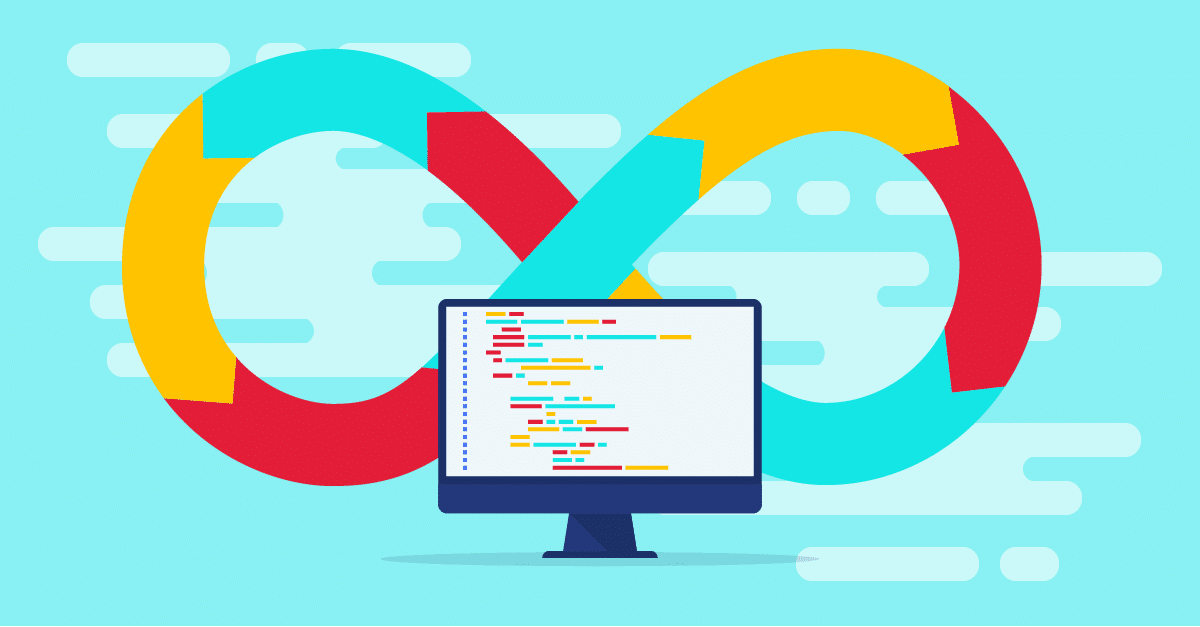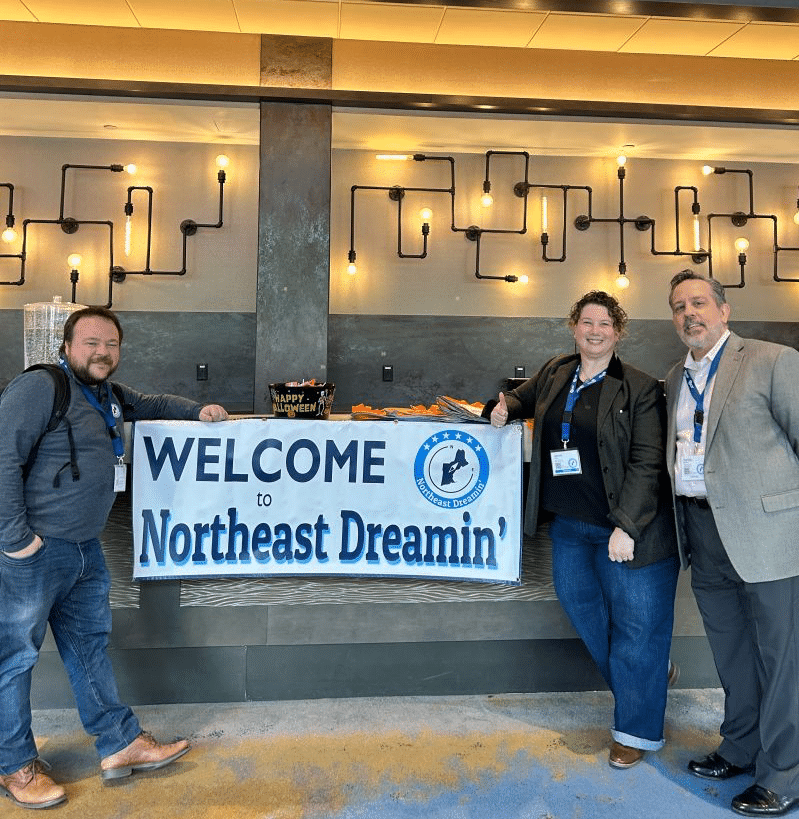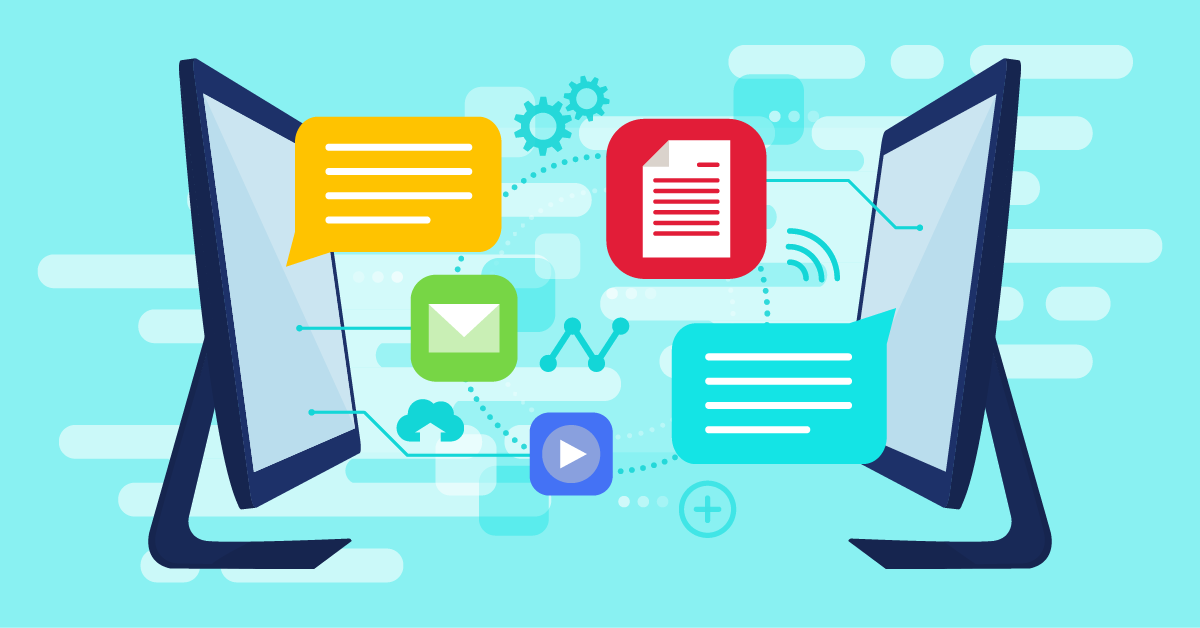
Key Takeaways from Northeast Dreamin’ 2024
It’s likely safe to assume that you may have heard a thing or two about Artificial Intelligence (AI). I recently attended the Northeast Dreamin’ conference, an annual event for the entire Salesforce community to get together, and as expected, AI was being touted everywhere. All the vendors had some level of AI embedded into their platform with matching marketing material to explain how their AI makes the consumers’ life easier or at least more informed. Admittedly, while I am a fan of such things, I generally gloss over these adverts as the benefits are most often geared to the end user or consumer.

Pictured: Chris Pifer, Jaemi Loeb, Carlos Figueras
However, having attended a few breakout sessions, an interesting realization happened which helped shift my mindset to look not only at the direct benefits but rather the indirect benefits consumers will gain from utilizing AI. At these sessions, the consultants were not selling a particular product with AI, rather they shared ways in which they were currently applying AI to a few of their time-consuming tasks. Rather than AI being touted as an indispensable add-on to the end consumer, it was being leveraged to assist the system integrators with certain aspects of the project delivery.
Session 1 – Business Analysts lead the AI charge
The first session I attended centered around leveraging AI to help craft user stories. For anyone having gone through a software implementation project, user stories should be a familiar term. The creation of user stories, while critical as they serve as the foundation for what actually gets built in a project, can also be a large, time-consuming operation that ultimately consumes a large chuck of the contract’s billable hours.
This team of consultants used the video transcripts from their client calls as their source information and had AI craft the user stories. This did require the team to spend some time reconfiguring and adjusting their queries in order to get the desired results. Once the stories were generated, the team then sifted through the output to remove any duplicates and make other small edits. While the process was not as turnkey as people would like to think, the team’s investment in configuring their queries did yield substantial benefits.
Combined with AI, the team was able to produce more, higher quality stories in less time. While the benefit to the consumer here is still relatively direct, the indirect benefit is that the team was able to listen more intently to the client’s needs during the video call rather than simply identifying when or where a possible user story was mentioned or discussed. The team was also able to pivot and turn their energy and attention to other aspects of discovery or the build.
Leveraging AI to build user stories ultimately yielded:
- Less time creating and more time editing and aligning user stories
- Higher quality and better consistency across the user stories
- More time with client or other high impact project activities
Session 2 – Developers can have fun, too
The second session was like the first in that the consultant was leveraging AI to assist with an internal function. However, this time it was a developer, and the topic was the creation of unit tests. Slightly lesser known than user stories, unit tests are a required artifact that a developer must create and submit for each piece of code to be deployed into production. Similar to the initial session, there was a slight learning curve needed in order to get the query correct. The result was a prefabricated and templated piece of code that the developer would then need to finalize. While this may seem trivial, it not only reduced the time needed to get the code to that spot, but it also improved the overall code coverage. The direct benefit to the consumer would be that the development work is completed on, or ahead of, time. The indirect benefit is that the developer would develop higher quality test units with more focus on regression and negative testing scenarios.
Leveraging AI to create user tests ultimately yielded:
- Less time on generating test unit start point
- Improved overall Code Coverage
- Improved testing – negative and regression
Memory lane and the future
These experiences reminded me of one of the first case studies I came across on the benefits of AI. Early on in its AI development journey, Salesforce acquired an analytics company. That company had a marketing anecdote that stuck with me. They had a client in the healthcare IT space that employed a team of data analysts and the team leveraged a predictive AI model to help sort through tens of millions of records. The team admitted that without the AI model, it would have been highly prohibitive and likely would have taken significantly more time and with vastly lower initial results. The AI tool, while integral to the efforts, did not do the work for the team; rather, it provided a viable starting point for the team to begin its analysis. It spared the team the time to make those initial steps and allowed them to focus on the analysis of the records presented to them.
While the anecdote deals with predicative AI, the outreach sessions were both examples of generative AI. While the predictive AI merely sorted a large folder, it did so much faster than a team of humans could have, thereby allowing them to focus on another part of the equation. The same can be said for the breakout sessions, while with a slightly different and more mature AI, the result is nearly the same as it doesn’t complete the task, but rather provides the user with a starting point further along in their respective processes.
So, where do we go from here? I used to joke that AI will have truly arrived when we can simply tell Salesforce or any other Software-as-a-Service (SaaS) how to configure itself based on the client needs, effectively bypassing the consultants and integrators altogether. While that may still be an attainable goal, I am not sure we are that close to that reality yet. That said, we do not need to wait for that moment to engage and implement what AI can provide in the current moment. There will be other developments, applications of AI, and milestones to come, and we should welcome the benefits as they unfold. I for one am looking forward to the day that AI facilitates processes around data migration!

Attain Partners – Salesforce Experts
As the AI landscape continues to evolve, Attain Partners is uniquely positioned to help existing and prospective clients navigate and optimize their AI strategies. Not only will our team be aware of the direct or consumer facing features of vendors’ upcoming AI features, but we will also continue to employ these tools internally to leverage the indirect benefits and pass along that value to our clients. Effectively, when partnering with Attain Partners, clients can get the best of both worlds reaping both the direct benefits of AI as well as the indirect benefits manifested by our consultant team utilizing AI throughout the project lifecycle. Contact us today to learn more.
About the Author

Carlos Figueras has over a decade of experience in Salesforce consulting, project management, and business analysis. He has earned 14 Salesforce certifications, including Education Cloud, Nonprofit Cloud and the Tableau CRM and Einstein Discovery certifications. At Attain Partners, Carlos is a Senior Consultant with nonprofits and universities, specializing in data modeling, analytics, and process automation.













